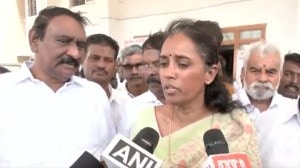Healthy Alternatives
I don’t know about you, but I’ve often wondered why those branches of medicine which are thousands of years old are labelled ‘...

I don’t know about you, but I’ve often wondered why those branches of medicine which are thousands of years old are labelled ‘alternate medicine’ and modern medicine, which is only 200 years old, is the mainstream one.
I’m not anti-allopathy: it is indispensable in emergency and surgical cures and has rid mankind of several scourges. But I’m more inclined to trust holistic methods of diagnosis and acknowledging the mind-body connection.
Also, a study of the ‘‘Martindale’s pharmacopea’’ (where all the allopathic remedies are listed along with horrific side-effects) is enough to send me scurrying and looking for so-called ‘alternatives’. Sure, some of these systems are not validated by trials and laboratory tests and may be in the hands of quacks, or their cures may have lethal side-effects.
The ideal scenario would be an integration of the strengths of all the systems. Over the past 10 years, I have been on the lookout for one such solution and here it is.
Let’s raise a toast to the author of this magnificent, landmark of a book. It holds within its covers, 692 pages of well-researched and documented information and is titled Stepping Beyond Alternative Medicine—Principles of Integrated Medicine. I can’t think of anyone more suitably qualified and wise than the feisty 88-year-old Dr PR Mhatre to have written this tome.
A graduate in medicine and surgery from Mumbai’s Grant Medical College, he practiced general medicine for 45 years and has lectured in physiology and hygiene. A committed and focused doctor, Dr Mhatre learnt the principles and practice of homeopathy from the late Dr Dhawale, one of our leading homeopaths, studied acupuncture from Dr Felix Mann, the eminent British acupuncturist, auroculo acupuncture from Dr Paul Nogier in France and has also studied at the Boltzmann Acupuncture Institute in Vienna. Dr Mhatre even taught and studied at the Hamdard Unani University in New Delhi, practised ayurveda and learnt Tibetan Medicine from His Holiness, the Dalai Lama.
The result is this recently published book, which is aimed at medical professionals. Large chapters are devoted to acupuncture, ayurveda, homeopathy, Tibetan medicine, Greek/Arabic or Unani medicine and even nutrition, diet therapy, yoga, psychotherapy and counselling. Each of these systems treats the individual as unique and treatments are tailored to meet his or her specific needs. The ‘‘Integrated Therapeutic Index’’ is also amazingly useful. Treatments in each of the systems are listed against the different problems.
For instance, those who suffer from insomnia would benefit from the application of Brahmi oil on the scalp and soles of feet and use of ayurvedic compounds like shankah-odar rasa.
Tibetan medicine believes that insomnia is due to excess intake of bitter, light and coarse powdered foods and emotional stress and recommends use of Inula Racemosa. Unani medicine also recommends scalp massage with roghan khaskhas, drinking of sharbat, khaskhas etc.
The depth of research and comprehensiveness, supplemented by Dr Mhatre’s qualifications and experience, make this an absolute must-read for doctors and laypersons like me who are in search of integrated and wise physicians.
Stepping Beyond
Alternative Medicine—Principles of Integrated Medicine — Dr P R Mhatre
A Tata McGraw Hill Publication






- 01
- 02
- 03
- 04
- 05

























